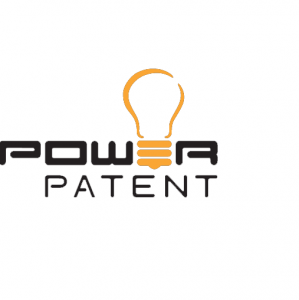PowerPatent Launches Second Generation Section 112 Diagnostics Feature for Enhanced Patent Drafting
PowerPatent unveils AI-driven Section 112 Diagnostics tool to improve patent application accuracy, transforming the drafting process for attorneys.
CHARLOTTE, NORTH CAROLINA, UNITED STATES, August 29, 2024 /EINPresswire.com/ -- PowerPatent, a leading provider of AI-powered patent drafting solutions, has announced the launch of its new Section 112 Diagnostics feature. This innovative tool enhances the accuracy and compliance of patent applications by automating critical aspects of the drafting process. The Section 112 Diagnostics feature offers several key capabilities including Claim Support Analysis, Antecedent Basis Check and Functional Claiming Analysis.
Attorney Cephas Doc, PowerPatent's Head of User Experience, commented on the significance of this development: "PowerPatent's new Section 112 Diagnostics feature represents a major leap forward in AI-assisted patent drafting. By automating complex compliance checks, it allows patent attorneys to focus more on the strategic aspects of patent prosecution. This tool has the potential to significantly reduce the risk of costly rejections and appeals, ultimately benefiting both inventors and legal professionals."
Doc further emphasized the tool's potential impact on patent quality and efficiency: "In my experience, ensuring Section 112 compliance is one of the most time-consuming aspects of patent drafting. PowerPatent's AI-driven approach not only saves valuable time but also enhances the overall quality of patent applications. This technology could be a game-changer for patent attorneys looking to streamline their workflows without compromising on accuracy."
The Section 112 Diagnostics feature is now available as part of PowerPatent's comprehensive suite of patent drafting solutions.
Claim Support Analysis
Ensuring that each claim in a patent application is adequately supported by the description is crucial for avoiding rejections. The Claim Support Analysis feature systematically verifies that all claims are sufficiently backed by the written description, and this reduces the likelihood of an examiner rejecting the application for lack of support. This automated check not only saves time but also increases the reliability of the patent application.
PowerPatent’s claim support analysis capability addresses one of the most critical aspects of patent drafting and thereby ensures that each claim is well-supported by the written description. Traditionally, this task required meticulous manual review, often leading to inconsistencies and oversights. By automating this process, PowerPatent's tool offers a more thorough and consistent verification, ensuring that every claim is backed by the necessary descriptive support. This not only enhances the quality of the application but also reduces the risk of rejection due to insufficient claim support.
Moreover, the automated Claim Support Analysis feature allows attorneys to focus more on the strategic aspects of drafting, such as defining the scope of protection and addressing potential prior art. By delegating the routine but essential task of claim support verification to AI, attorneys can allocate more time to crafting stronger, more comprehensive claims. This shift not only improves the overall quality of the patent application but also increases the chances of a successful grant, thereby providing greater value to clients.
Antecedent Basis Check
A common issue in patent drafting is the failure to provide a clear antecedent basis for every claim reference. This can lead to rejections and delays in the patent approval process. PowerPatent’s Antecedent Basis Check feature scans the patent application to ensure that every claim term is properly introduced and supported in the description. By automating this tedious yet critical task, PowerPatent helps attorneys maintain clarity and precision in their patent claims.
The Antecedent Basis Check capability is crucial for maintaining the coherence and clarity of patent claims. Each term used in a claim must have a clear antecedent basis in the description to ensure that the claim is understandable and precise. Manually verifying this can be a daunting and error-prone task, particularly in complex patent applications with numerous claims and terms. PowerPatent's automated Antecedent Basis Check ensures that every term is properly introduced and defined, significantly reducing the risk of rejections due to unclear or unsupported terms.
Furthermore, this feature helps streamline the drafting process by eliminating the need for repeated manual reviews and revisions. With the Antecedent Basis Check, attorneys can quickly identify and correct any issues related to claim terminology, ensuring that the application is clear and precise from the outset. This not only expedites the drafting process but also enhances the overall quality of the application, making it more likely to be accepted by patent examiners.
Functional Claiming Analysis
Functional claiming involves using language that describes what an invention does rather than how it is structured. This type of claiming must meet specific enablement and definiteness requirements to be valid. PowerPatent’s Functional Claiming Analysis feature assesses whether the functional language used in the patent application meets these requirements, helping to avoid rejections based on indefiniteness or lack of enablement.
Functional claiming is a powerful tool for broadening the scope of patent protection, but it comes with stringent requirements for enablement and definiteness. The Functional Claiming Analysis feature in PowerPatent's Section 112 Diagnostics assesses the functional language used in the application to ensure it meets these critical requirements.
This automated analysis helps identify potential issues with functional claims, providing attorneys with the insights needed to refine and strengthen their claims.
By automating the assessment of functional language, the Functional Claiming Analysis feature reduces the risk of rejections based on indefiniteness or lack of enablement. This capability is particularly valuable in fields where functional claiming is common, such as software and biotechnology. By ensuring that functional claims are robust and well-supported, PowerPatent's tool helps attorneys secure broader and more defensible patent protection for their clients.
The Benefits of AI-Driven Patent Drafting
The introduction of AI into the patent drafting process is a game-changer for the industry. Traditionally, ensuring compliance with Section 112 of the patent law has been a labor-intensive and time-consuming process. Patent attorneys must meticulously check that each claim is supported by the description, that every term has a clear antecedent basis, and that functional claims meet stringent requirements. This process can take many hours of detailed work, often requiring multiple rounds of review and revision. Each step in this process is critical, as any oversight or error can lead to rejections, delays, and additional costs. The complexity and detailed nature of these tasks have long been a challenge for patent professionals, making the integration of AI a transformative development.
With PowerPatent's Section 112 Diagnostics, these tasks are automated, allowing attorneys to focus on higher-level strategic aspects of patent prosecution. The AI-driven tool performs comprehensive checks quickly and accurately, reducing the risk of human error and increasing the overall quality of the patent application. By handling the routine yet essential compliance checks, the AI tool ensures that all claims are thoroughly vetted for support, antecedent basis, and functional language requirements. This automation not only speeds up the drafting process but also enhances precision and consistency, which are crucial for successful patent applications.
This not only saves time and reduces costs but also helps attorneys to file stronger, more defensible patents. The reduction in time spent on manual compliance checks allows attorneys to allocate more resources to refining the scope and robustness of their claims. Stronger patents are less likely to be challenged and more likely to withstand scrutiny during prosecution and potential litigation. Additionally, the cost savings associated with reduced labor and fewer rejections can be significant, making the patent process more accessible and efficient for inventors and companies alike.
This integration of AI in patent drafting through tools like Section 112 Diagnostics not only addresses the traditional challenges faced by patent attorneys but also opens up new opportunities for innovation and efficiency. The shift towards AI-driven patent drafting is poised to redefine industry standards, leading to more effective and streamlined patent prosecution processes, better outcomes for clients, and a more dynamic and competitive patent landscape.
Impact on the Patent Industry
The launch of Section 112 Diagnostics is poised to have a significant impact on the patent industry. By automating some of the most complex and error-prone aspects of patent drafting, this tool can help reduce the incidence of rejections and appeals. Patent drafting requires meticulous attention to detail and strict adherence to legal standards, often involving repetitive and time-consuming tasks. With Section 112 Diagnostics, many of these tasks are automated, ensuring consistency and accuracy. This not only reduces the potential for human error but also accelerates the drafting process, allowing patent applications to be filed more quickly and with greater confidence in their compliance.
This, in turn, can lead to faster approval times and lower costs for inventors and companies seeking patent protection. The traditional patent application process can be lengthy and costly, with multiple rounds of review and revision often required to address examiner rejections. By minimizing errors and improving the initial quality of applications, Section 112 Diagnostics can significantly reduce the time and resources spent on revisions and appeals. This streamlined process benefits inventors and companies by shortening the time to market for new innovations and reducing the overall costs associated with obtaining patent protection.
For patent attorneys, the tool offers a way to enhance their practice by improving the quality and reliability of their work. In using AI to handle routine compliance checks, attorneys can allocate more time to developing robust patent strategies and advocating for their clients. This shift in focus allows attorneys to leverage their expertise in more strategic ways, such as identifying and addressing potential legal challenges, crafting stronger claims, and exploring broader protection scopes. The result is a higher quality of service for clients, who receive more comprehensive and strategically sound patent applications.
Ultimately, this can lead to better outcomes for clients and a more efficient patent prosecution process overall. By reducing the incidence of rejections and appeals, Section 112 Diagnostics helps ensure that patent applications are more likely to be approved on the first submission. This not only enhances client satisfaction but also strengthens the attorney-client relationship, as clients can see tangible benefits from the attorney's use of advanced technology. Additionally, the efficiency gains realized through the use of AI tools can allow patent attorneys to take on more clients or focus on more complex cases, further enhancing their practice and the overall efficiency of the patent system. In a competitive and fast-paced industry, such advancements are crucial for staying ahead and providing the best possible outcomes for clients.
Future Developments
PowerPatent is committed to continuing to innovate in the field of AI-driven patent solutions. The company plans to expand the capabilities of its Section 112 Diagnostics feature in future updates, incorporating additional checks and refinements based on user feedback and advancements in AI technology. This commitment to ongoing improvement ensures that PowerPatent's tools will remain at the cutting edge of patent drafting technology.
In terms of customer feedback, early feedback from users of the Section 112 Diagnostics feature has been overwhelmingly positive. Patent attorneys have reported significant time savings and increased confidence in the quality of their applications. Inventors and companies have also appreciated the reduction in rejections and appeals, which translates to lower costs and faster patent approvals.
About PowerPatent
PowerPatent is a leading technology company specializing in intellectual property solutions. With a strong commitment to innovation and cutting-edge technology, PowerPatent empowers inventors, patent attorneys, and IP professionals across various industries to navigate the complex world of patenting with confidence and success.
Mary Kimani
PowerPatent
+1 669-232-3440
email us here
Visit us on social media:
Facebook
X
LinkedIn
YouTube
AI Copilot for Patent Drafting
Legal Disclaimer:
EIN Presswire provides this news content "as is" without warranty of any kind. We do not accept any responsibility or liability for the accuracy, content, images, videos, licenses, completeness, legality, or reliability of the information contained in this article. If you have any complaints or copyright issues related to this article, kindly contact the author above.




